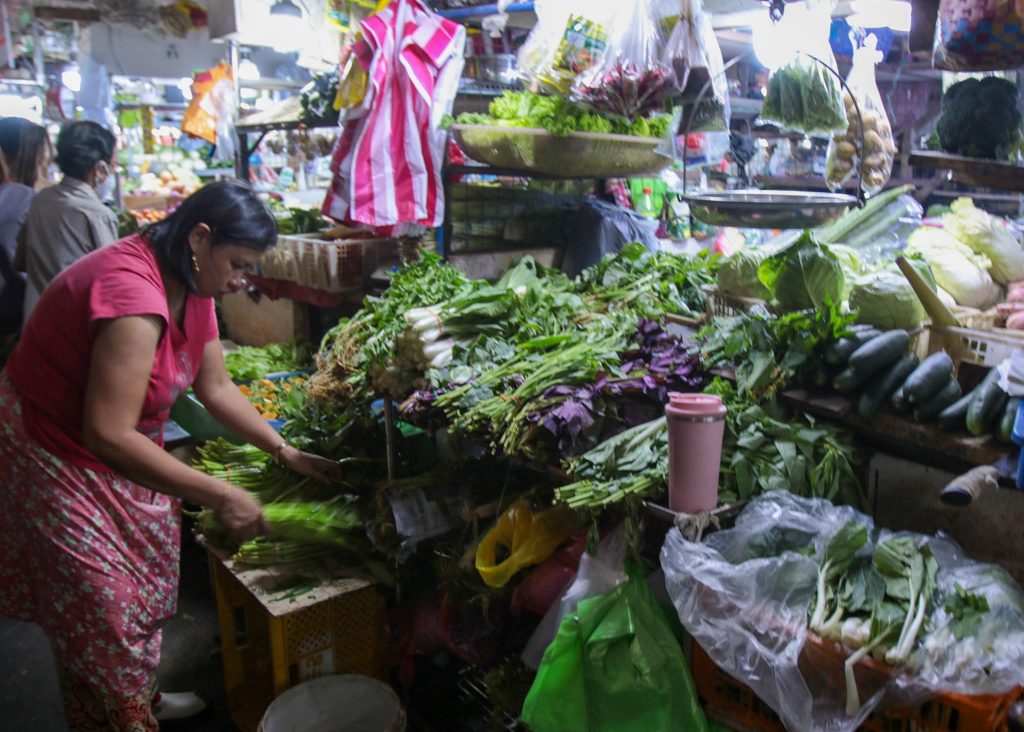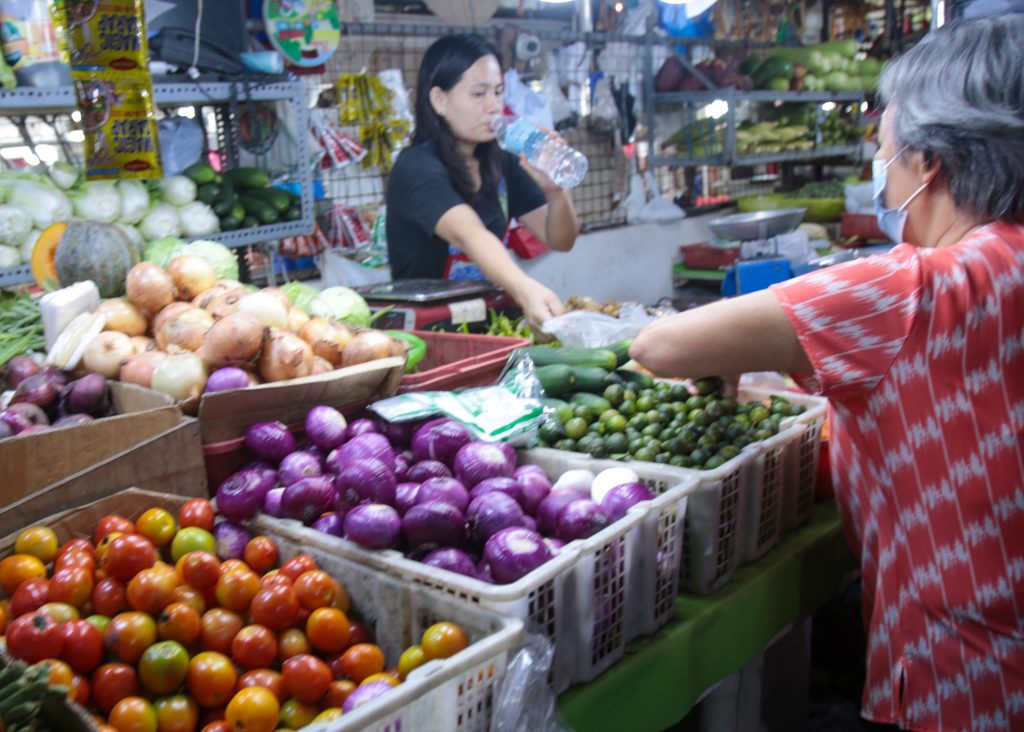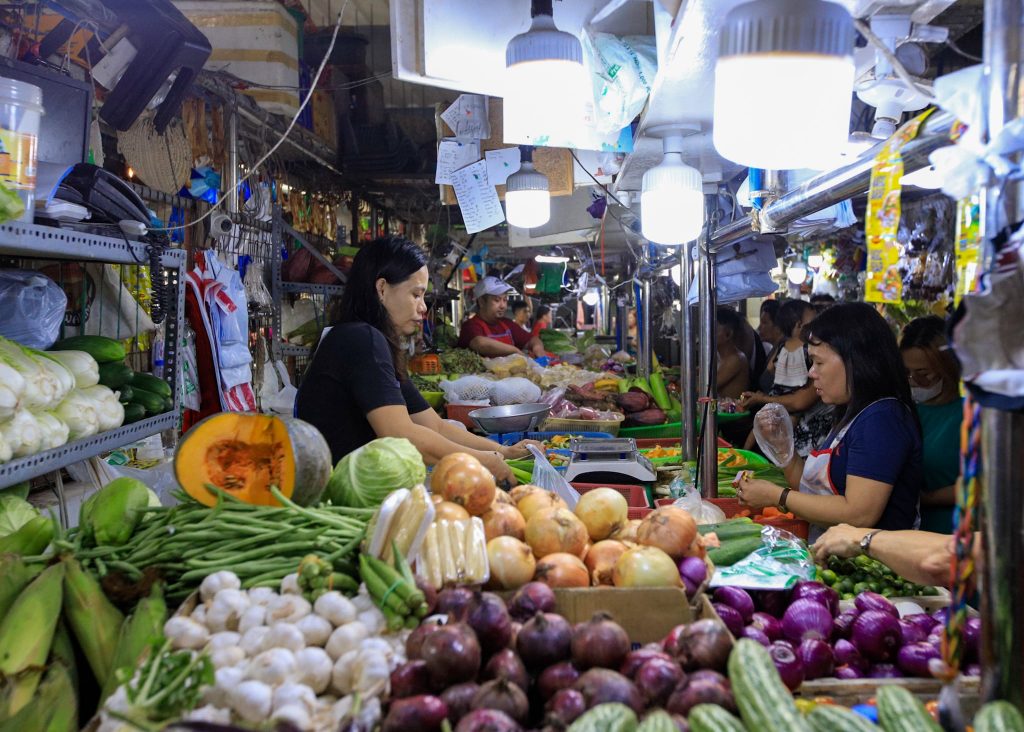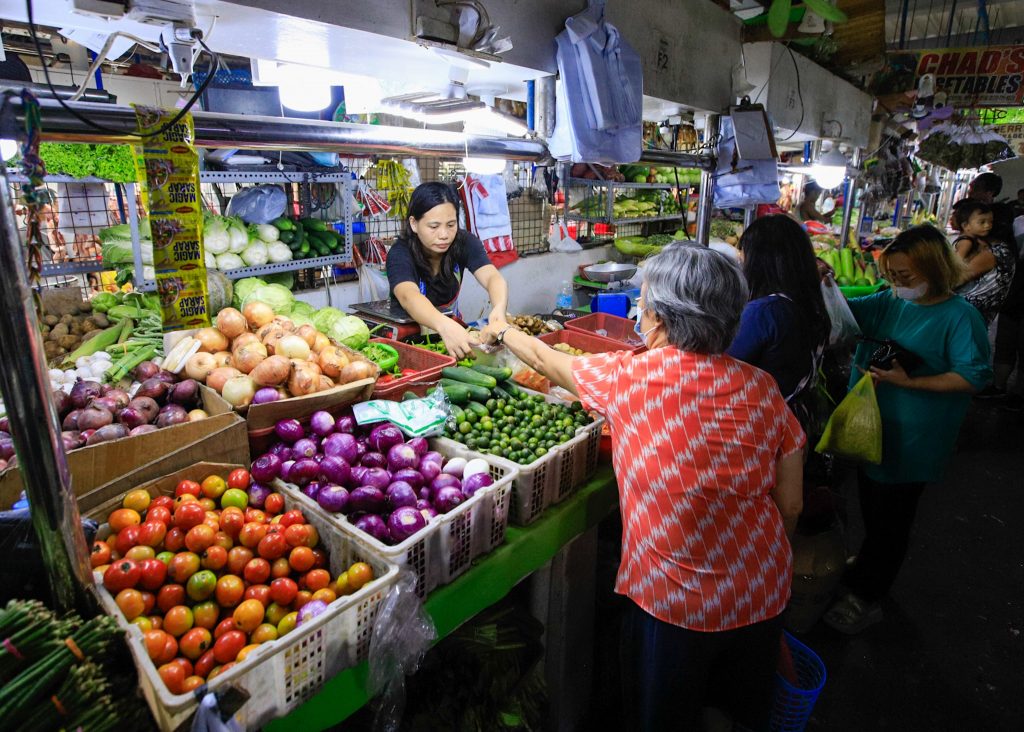MANILA – A dip in February’s inflation rate helped buoy both the stock market and the Philippine peso on Wednesday (05 Mar 2025).
The Philippine Stock Exchange index (PSEi) extended its rally, rising for the third consecutive day. It gained 0.95% to close at 6,121.77, while the All Shares index increased by 0.98% to finish at 3,664.54.
All sectoral indices, except for Services which fell by 0.01%, closed in positive territory. Property stocks saw the most significant gains, rising by 2.99%, followed by Holding Firms (up by 1.16%), Mining and Oil (up by 1.12%), Industrial (up by 0.75%), and Financials (up by 0.21%).
The Philippine Statistics Authority reported that inflation in February slowed to 2.1%, down from 2.9% in January, which investors interpreted as a favorable sign for the economy.
Philstock Financials, Inc. research manager Japhet Tantiangco highlighted that the inflation slowdown could support economic growth, particularly in household consumption. He also noted that the data could signal the potential for policy easing by the Bangko Sentral ng Pilipinas.
Tantiangco also observed that the market’s net value turnover for the day reached PHP 7.23 billion, surpassing the year-to-date average of PHP 5.24 billion.
The day’s market performance saw 114 advancers outpacing 77 decliners, with 55 stocks remaining unchanged.
Meanwhile, the Philippine peso strengthened further against the US dollar, closing at 57.35, up from 57.75 the previous day. The peso opened at 57.60, improving from its previous day’s start of 57.83. Throughout the day, the currency traded between 57.32 and 57.61, with an average of 57.50 to the US dollar.
Trade volume also increased, reaching USD 1.55 billion compared to the previous day’s USD 1.04 billion.
ia/mnm
MANILA – The Philippine Stock Exchange index (PSEi) and the peso both gained ground on Tuesday as investors took advantage of bargain-hunting opportunities ahead of the consumer price index (CPI) release.
The PSEi climbed 0.45% to close at 6,064.11, while the broader All Shares index inched up 0.24% to 3,628.96.
“The local bourse extended gains as investors seized bargain-hunting opportunities ahead of the consumer price index release,” said Luis Limlingan, head of sales at Regina Capital Development Corp.
Mining and Oil led the market rally, surging 3.27% to 8,129.20 points, followed by Financials (+1.27%), Services (+0.73%), and Industrial (+0.49%). Meanwhile, Property (-0.12%) and Holding Firms (-0.07%) were the only sectors that ended in the red.
Market breadth was positive, with 107 gainers outpacing 84 decliners, while 49 stocks remained unchanged.
Peso Gains Against the Dollar
The Philippine peso strengthened to ₱57.75 against the US dollar, gaining ₱0.15 from Monday’s close of ₱57.90. It opened stronger at ₱57.83, fluctuating between ₱57.75 and ₱57.84 throughout the day.
Despite the peso’s appreciation, trade volume dipped slightly to $1.04 billion, down from $1.06 billion the previous day.
Analysts attribute the peso’s gain to anticipation of the latest inflation data, which could influence the Bangko Sentral ng Pilipinas’ (BSP) next policy move.
ia/mnm
MANILA — The Department of Agriculture (DA) has announced the imposition of a P55 per kilogram maximum suggested retail price (MSRP) for imported rice, effective today, February 5. This marks a P3 reduction from the previous price set on January 20.
This move follows Monday’s declaration of a food security emergency, which enables the government to release rice buffer stocks held by the National Food Authority (NFA) in a bid to lower rice prices. Despite a recent tariff reduction on imported rice, prices have remained high in markets across the country.
Agriculture Secretary Francisco Tiu Laurel Jr. stated that the MSRP could further decrease in the coming weeks, potentially dropping below P50 per kilogram by early March. “After this reduction, we plan to lower it further to P52 a kilo by mid-February and then to P49 per kilo two weeks after,” he said. “This will reflect the lower global prices of rice and the reduced tariff.”
The introduction of an MSRP follows consultations with rice industry stakeholders, including importers and retailers, to balance consumer relief with the needs of the domestic rice industry. With this new ceiling, the DA aims to stabilize rice prices and mitigate inflationary pressures on essential goods.
The decision is seen as a key measure in managing food price inflation, particularly for rice, with the government hoping to ensure that staple food remains affordable for low-income families.
ia/mnm
MANILA – The Philippine Stock Exchange index (PSEi) started the week strong, climbing by 1.16% to 7,554.68, while the All Shares index gained 1.02% to close at 4,082.97. Leading sectors included Property, up by 2.05%, and Services, rising 1.9%.
Four out of six indices ended in positive territory, with Financials and Mining and Oil falling slightly by 0.46% and 0.39%, respectively. Advancers outpaced decliners, 129 to 79, with 49 issues unchanged.
Investors were buoyed by the significant slowdown in inflation for September, raising hopes for further monetary easing by the Bangko Sentral ng Pilipinas (BSP). Optimism was also fueled by expectations of potential rate cuts from the US Federal Reserve, according to Philstocks Financials’ research manager, Japhet Tantiangco.
Despite the positive stock market performance, the peso depreciated, closing at 56.83 to the US dollar, down from last week’s 56.38. The local currency traded between 56.58 and 56.84 throughout the day, with an average of 56.71. Trade volume dipped to USD1.3 billion from Friday’s USD1.51 billion.
ia/mnm
By Junex Doronio
MANILA — Inflation and maintaining good health are top concerns for most adult Filipinos, according to the latest OCTA Research survey.
The “Tugon ng Masa” survey, which included 1,200 adult Filipino respondents, revealed that 65% viewed controlling the increase in basic commodity prices as an urgent concern. This was followed by concerns over affordable food (40%), wage increases (33%), reducing poverty (33%), and free quality education (28%).
“A higher percentage of adults in Mindanao (71%) consider controlling the increase in prices of basic goods and services as an urgent national concern,” OCTA Research disclosed. “In comparison, 51% of adult Filipinos in Visayas expressed more significant concern about access to affordable food than in other major areas,” it added.
The survey also identified the respondents’ top three urgent personal concerns. Topping the list was staying healthy at 71%, followed by having enough to eat every day at 57%, and finishing school or providing education to their children at 44%.
The non-commissioned survey was conducted through face-to-face interviews from June 26 to July 1, 2024.
(el Amigo/mnm)
National Statistician Dennis Mapa disclosed that in September, headline inflation, denoting the pace of increase in the average costs of items and services frequently purchased by consumers, climbed to 6.1 percent. This percentage reflects a significant rise in contrast to the 5.3 percent documented in August.
Enhanced with captivating photographs, the pictures illustrate vendors conscientiously tending to their clientele as they vend vegetables at the Paco Public Market on Saturday, October 7, 2023.







(Report & photography by Benjie Cuaresma/ai/mnm)
